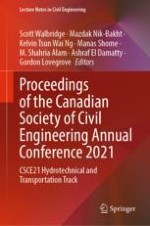2022 | OriginalPaper | Chapter
A Multiple Linear Regression (MLR) Model for the Application of Electrical Vehicles in the United States
Authors : L. Navarro, B. Bathaei
Published in: Proceedings of the Canadian Society of Civil Engineering Annual Conference 2021
Publisher: Springer Nature Singapore
Activate our intelligent search to find suitable subject content or patents.
Select sections of text to find matching patents with Artificial Intelligence. powered by
Select sections of text to find additional relevant content using AI-assisted search. powered by
